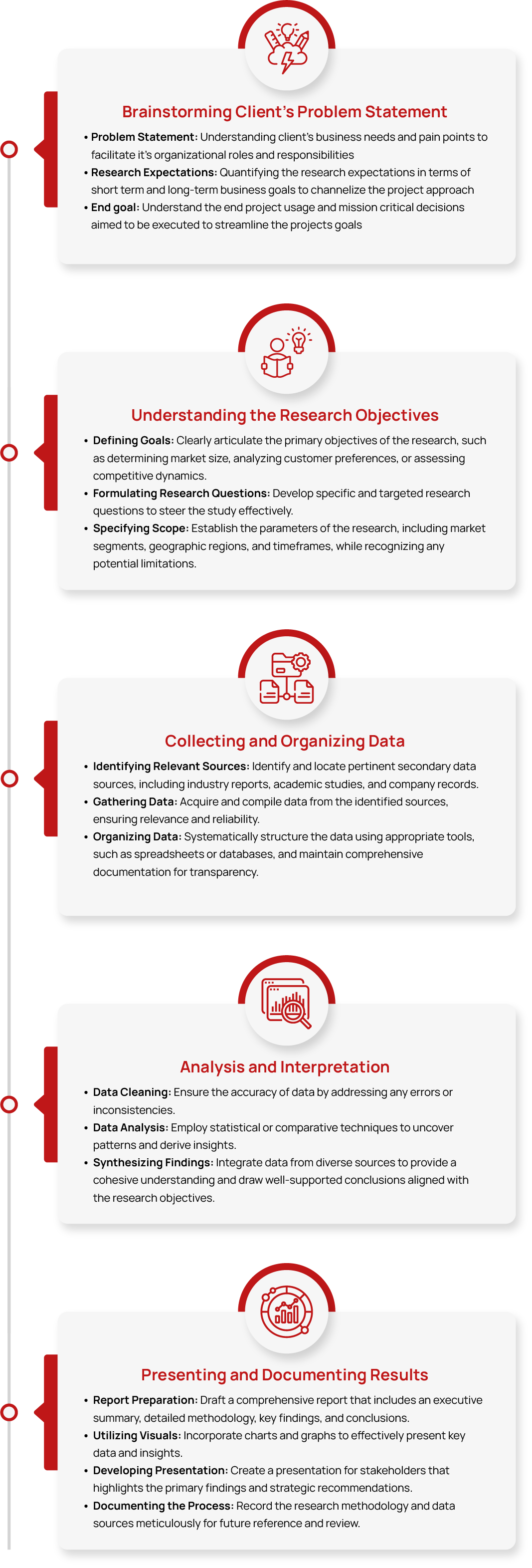Global Dairy Alternatives Market Size, Share, Growth and Trend Analysis Report, 2032
- Summary
- Market Landscape
- Methodology
- Table of Contents
Global Dairy Alternatives Market Size, Share & Growth and Trend Analysis Report, By Source (Soy, Almond, Coconut, Oats, Hemp and Others), By Application (Milk, Yogurt, Ice Creams, Cheese, Creamers), By Distribution Channel (Retail, Online Stores, Foodservice) and By Region (Asia Pacific, Europe, North America, Latin America and Middle East & Africa) and Forecasts 2025 – 2032.
Dairy Alternatives are plant-based products designed to mimic traditional dairy products like milk, cheese, and yogurt. These alternatives are made from ingredients such as soy, almond, oat, coconut, and rice, offering options for individuals with lactose intolerance, vegan diets, or those seeking lower environmental impacts compared to conventional dairy.
The Dairy Alternatives Market was valued at approximately USD XX billion in 2024. It is projected to grow to USD XX billion by 2032, with an approximately compound annual growth rate (CAGR) of 12% from 2025 to 2032.
Industry Trends
The dairy alternatives market is witnessing continuous innovations in plant-based formulations, creating more diverse and functional products. Companies are increasingly focusing on improving the nutritional profiles and sensory qualities of dairy alternatives to cater to evolving consumer preferences.
The dairy alternatives market is growing rapidly, driven by rising consumer demand for plant-based, lactose-free, and sustainable products. Innovations in ingredients are enhancing the taste, texture, and nutritional value of dairy alternatives, helping them closely resemble traditional dairy, making them more appealing to a broader consumer base.
Dairy alternatives are expanding in sectors like food and beverages, with increased adoption in retail, restaurants, and online markets. The growth is fueled by growing environmental concerns, the rise in vegan diets, and health issues like lactose intolerance, with plant-based milks and dairy-free products gaining popularity.
However, the dairy alternatives market faces several challenges. One key restraint is the high cost of production, particularly for premium plant-based products, which can deter mass-market adoption. Additionally, the lack of widespread availability and limited distribution channels in certain regions can hinder market growth. There are also consumer concerns regarding the taste, texture, and nutritional value of dairy alternatives compared to traditional dairy.
Furthermore, the market is subject to regulatory hurdles around labeling and health claims, which can slow product innovation and market penetration. Finally, fluctuations in the prices of raw materials used in plant-based dairy alternatives can impact overall cost stability.
Industry Expert's Opinion:
- Becky Ramsing, Public Health Nutritional Professional, Registered Dietitian, and Senior Program Officer at Johns Hopkins Center for a Livable Future.
“Eat a diverse diet with lots of fruits and vegetables and you wouldn't have to worry about being deficient in either vitamin B2 or in phosphorus. Plant-based milks can definitely be part of a healthy diet.”
TT Consultants’ Perspective
The dairy alternatives market is experiencing significant growth, driven by rising consumer demand for plant-based and sustainable food products. With increasing awareness about health, lactose intolerance, and environmental concerns, companies are investing in innovative solutions across milk, yogurt, and other dairy alternative products. Advances in plant-based formulations, enhanced flavor profiles, and improved nutritional content are driving product development, making dairy alternatives more appealing to a broader audience.
As the market continues to evolve, industry leaders are expanding their portfolios and forming strategic partnerships to enhance production capabilities and meet the growing demand. Collaborations between manufacturers, suppliers, and food-tech firms are accelerating the development of next-generation dairy alternatives, ensuring continued market expansion and innovation.
Market Segmentation
1. By Source (Soy, Almond, Coconut, Oats, Hemp and Others)
The dairy alternatives market is segmented by source, with the Soy segment holding the largest market share of XX% in 2024. Soy-based products are widely favored due to their high protein content, versatility, and affordability in various applications, such as milk, yogurt, and cheese alternatives. The almond segment is also growing rapidly with a CAGR of XX%, known for its creamy texture and low-calorie profile, making it popular among health-conscious consumers.
Coconut-based dairy alternatives are gaining traction for their rich flavor, particularly in milk and cream products, while Oats are becoming a leading choice for their smooth texture and sustainability, especially in coffee and ready-to-drink beverages. Hemp is an emerging source of milk in the market, offering nutritional benefits like omega fatty acids and high protein content.
The “Others” category, which includes ingredients like rice, pea, and cashew, is also expanding as manufacturers experiment with new sources to meet the growing demand for dairy-free alternatives tailored to specialized dietary needs. These diverse sources are shaping the market, with innovations in flavor, texture, and nutritional value driving continued growth in the sector.
2. By Application (Milk, Yogurt, Ice Creams, Cheese, Creamers)
The dairy alternatives market is segmented by application, with milk being the dominant segment, holding the largest market share of XX% in 2024.
Plant-based milk alternatives, including soy, almond, oat, and coconut, are gaining popularity due to their health benefits and lactose-free properties.
The Yogurt segment is also experiencing significant growth, driven by the rising demand for plant-based yogurt made from sources like almonds, coconut, and oats, catering to the health-conscious and lactose-intolerant consumers.
Ice Creams made from dairy alternatives are seeing a surge in popularity, particularly as companies innovate with rich flavors and creamy textures.
Cheese alternatives are expanding as consumers seek dairy-free options for their everyday meals, with ingredients like cashews and almonds being commonly used.
Creamers are also gaining traction in the market, with plant-based creamers offering rich, dairy-free options for coffee and other beverages.
These segments are growing as the demand for dairy-free and vegan alternatives continues to rise across global markets.
3. By Distribution Channel (Retail, Online Stores, Foodservice)
The dairy alternatives market is segmented by distribution channel, with Retail holding the largest market share of XX% in 2024.
Supermarkets and hypermarkets continue to be the dominant point of purchase for dairy alternative products, offering convenience and a wide variety of plant-based options. Online stores are rapidly gaining traction as consumers increasingly prefer the convenience of ordering dairy alternatives from e-commerce platforms, often driven by a wider product selection and the ease of home delivery.
The Foodservice segment is also growing, with many restaurants, cafes, and food chains incorporating plant-based milk, yogurt, and creamers into their offerings to cater to the rising demand for dairy-free alternatives. This segment is benefiting from the shift toward more sustainable and health-conscious dining options, with food service providers increasingly adopting dairy alternatives in response to changing consumer preferences.
Competitive Scenario
The global dairy alternatives market is dominated by key players such as Danone North America, The Hain Celestial Group, and Blue Diamond Growers, offering a wide range of plant-based products, including milk, yogurt, and creamers. Companies like Freedom Foods Group, Valsoia, and SunOpta hold strong regional positions, with an increasing focus on sustainability and innovation in their product offerings.
As consumer demand for healthier, eco-friendly alternatives grows, these firms are investing in R&D, strategic partnerships, and acquisitions to expand their portfolios and stay competitive. With a focus on improving taste, texture, and nutritional value, these leaders are well-positioned to drive the market forward, capitalizing on the growing trend toward plant-based diets and environmental consciousness.
Recent Developments and Strategic Activities:
- In November 2024, Swedish company Sproud has launched Barista ZERO, a yellow split pea-based sugar-free milk alternative.
- In September 2024, Oxbow Brands is excited to announce the launch of its new brand, Vegan Drink Company (VDC), aimed at meeting the growing demand for dairy-free alternatives among lactose-intolerant individuals and those embracing a vegan lifestyle.
- In June 2024, NIÚKE recently introduced a new quinoa milk product in the US. Marketed as the first quinoa-based plant milk in the United States, NIÚKE sources its quinoa from the Andes, ensuring a naturally cultivated product.
- In June 2024, Milkadamia expanded its product line last week with the introduction of Organic Artisan Shelf-Stable Macadamia Nut Milk, now available nationwide at Whole Foods Market. This new product is the company’s first USDA organic offering, featuring a simple ingredient list that mirrors homemade nut milk in taste and texture.
- In June 2023, Synthite launches plant-based dairy alternative and plant-protein in JV with PMEDS & IISc.

Please fill out the form to request the ToC and gain access to detailed insights in the report.
Request Table of Contents







